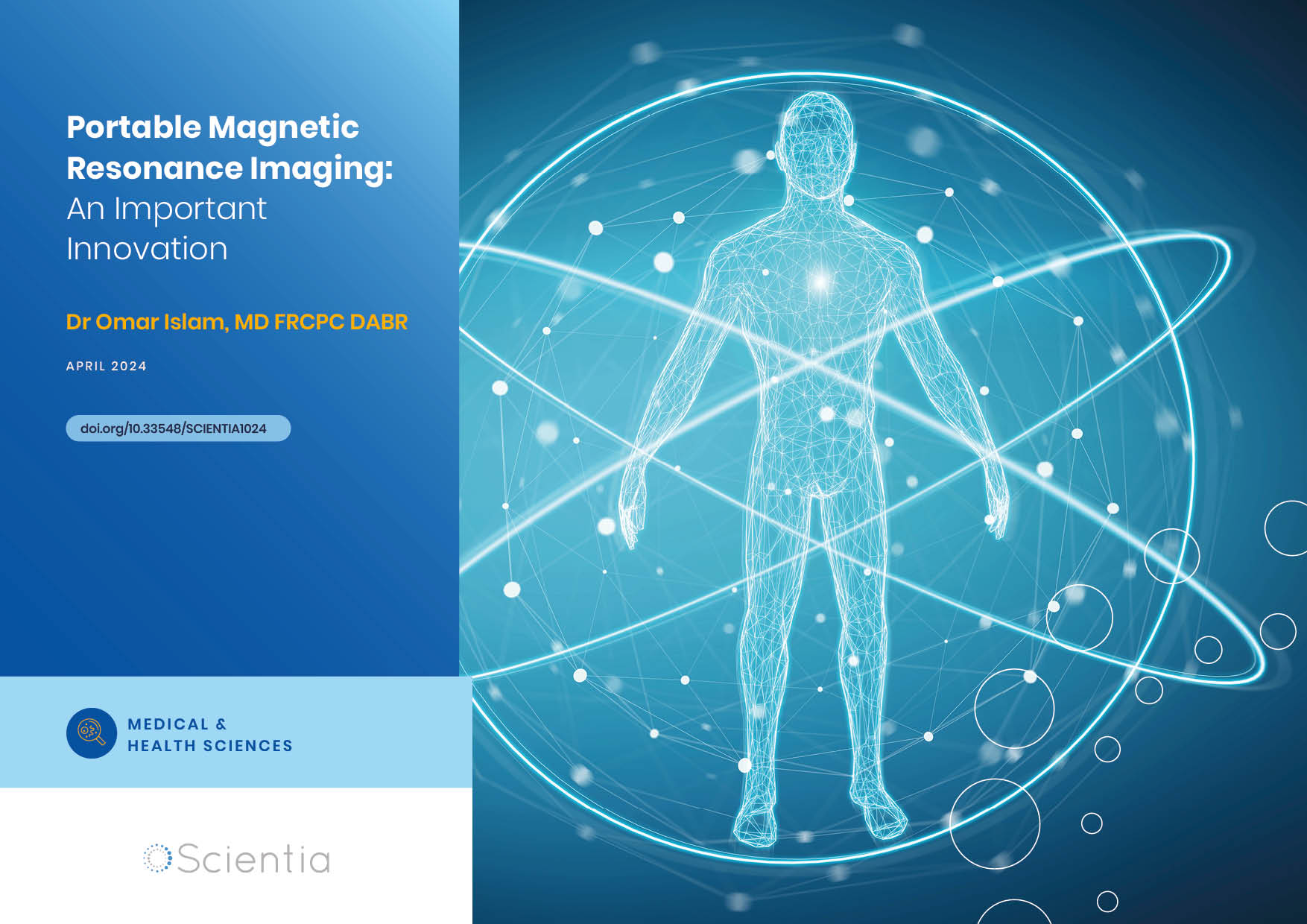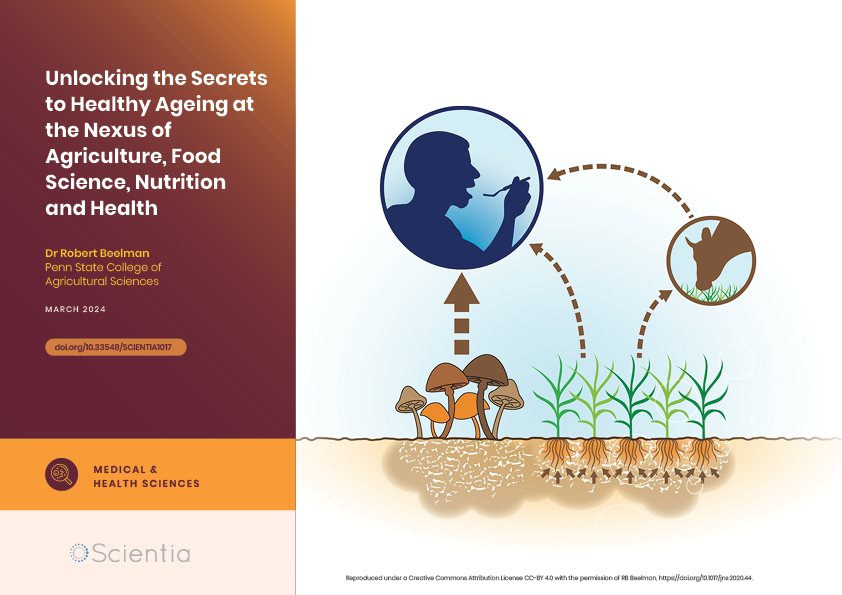Professor Ralf Herwig | Deciphering the Enigma of Vitamin D and the Immune System
Vitamin D has been studied as a treatment for a large number of diseases and conditions, from cancer to autism to COVID-19. However, its mode of action is not completely understood. Professor Ralf Herwig carries out his research at HG Pharma GmbH (Austria) and Ulster University (UK). His vital work explores the role of vitamin D in the body with a view to unlocking its potential as a treatment for a variety of health conditions involving the immune system.
The Fascinating Role of Vitamin D
Vitamin D helps to regulate the levels of phosphate and calcium in the body, holding a vital role in bone, muscle, and teeth health. The human body can create its own vitamin D directly from sunlight shining on the skin, but it can also be obtained from dietary sources such as oily fish like salmon and sardines, egg yolks, red meat, and liver. There are several forms of vitamin D. For example, the nutritional forms are ergocalciferol and cholecalciferol, and the more active forms are calcitriol and alfacalcidol. The vitamin is also assigned a number relating to its underlying structure, so there are D2 and D3 forms.
Professor Ralf Herwig, CEO of HG Pharma GmbH in Vienna and Associate Professor at the Birmingham Campus of Ulster University in the UK, carries out research into vitamin D. He explains that vitamin D actually has diverse molecular and physiological functions along with its sole application in the bone health. It plays an important role in regulating cell growth and cancer, blood pressure and insulin production, which can impact the risk of heart disease and type II diabetes. It also holds vital functions in the immune system and can influence autoimmune disease by activating numerous genes that are involved in the immune and inflammatory responses.
Vitamin D Binding Protein
Professor Herwig’s research delves into the biological functions and multi-therapeutic of a particular protein which binds to vitamin D. Vitamin D binding protein (VDBP) is thought to hold several crucial functions in the body. It not only helps to transport the vitamin and fatty acids but also has significant roles in serious health conditions such as sepsis, trauma, lung injury and burns, where it acts as an actin scavenger (actin is a protein found within cells which can become toxic if it escapes).
Professor Herwig explains that VDBP also helps to control certain immune cells, macrophages, and neutrophils and plays a pivotal role in regulating the availability of vitamin D to monocytes. His investigations have recently focused on the fascinating world of VDBP and its effects on the immune system cells.

Developing Immuno D®
Professor Herwig and his team developed the very first water-soluble vitamin D3 preparation, naming it Immuno D®. The unique formulation consists of vitamin D linked with VDBP, which has been modified structurally to form deglycosylated VDBP, shortened to Vit D-dgVDBP.
This formulation is patented and registered, with scientifically proven effects, although some studies are still in the early stages. Immuno D® (Vit D-dgVDBP) has demonstrated significant effects in autism, cancer, and viral diseases such as COVID-19. It is thought to affect the immune system at multiple levels, hence the numerous effects demonstrated with its use. The team continued to study Vit D-dgVDBP, looking at its structure, bonding, and interactions with the various components of the immune system to gain a better understanding of its mechanisms of action and potential avenues of research in terms of health conditions it could be used to treat.
Immuno D® and the Macrophages
Professor Herwig’s earlier work into Vit D-dgVDBP showed positive effects on the quality of life for suffers of amyloid lateral sclerosis, also known as motor neurone disease, which is characterised by loss of muscle control and movement over time, adding that it also helped patients with autism. He suggests it reduces a process called oxidative stress, which is an imbalance of certain chemicals called reactive oxygen species, and the ability of the body to remove these and fix the problems they can cause (these chemicals can damage cell components, including DNA).
The team then investigated how this reduction in oxidative stress was occurring, suspecting it was due to a combined, synergistic effect of the Vit D-dgVDBP on the recognition, activation, and phagocytosis (the ability to engulf unwanted foreign substances in the body) of the macrophage immune cells. They tested different combinations of VDBP, dgVDBP, and VitD-dgVDBP and measured macrophage phagocytosis and oxidative bursts in the absence or presence of each one (an oxidative burst is a release of harmful reactive oxygen species that happens after an immune cell has engulfed pathogen). The team reported that the Vit D-dgVDBP demonstrated a far higher macrophage activation and lower oxidation burst than either the VDBP or dgVDBP.
Killing Cancer Cells
It was still not very clear how VitD-dgVDBP impacts the circulating immune cells, including the processes such as phagocytosis and apoptosis (programmed cell death), and also the generation of reactive oxygen species when compared to dgVDBP. Professor Herwig and his colleagues proceeded to use a method called flow cytometry to measure reactive oxygen species and the activity of macrophage cells in the presence of dgVDBP or VitD-dgVDBP. The team also looked at the impact of dgVDBP and VitD-dgVDBP on cancerous prostate cells, estimating the levels of apoptosis.
The team reported that macrophage activity was 2.8 times higher, and reactive oxygen species production was 1.8 times lower when using the VitD-dgVDBP compared to the dgVDBP. They found that only the VitD-dgVDBP activated certain enzymes in the cancer cells, which hold a vital role in cell apoptosis. By deepening understanding of how their newly developed vitamin D formulation affects the immune system, new potential avenues of cancer research have been opened up.

Understanding the Structure of VitD-dgVDBP
In his more recent work, Professor Herwig investigated the structure of VitD-dgVDBP more closely. In this first-of-its-kind study, he compared the structural dynamics of VitD-VDBP and VitD-dgVDBP. He explains that they wanted to explore the role of deglycosylation on the dimeric binding with the vitamin D. VDBP is a dimer, a particular type of large protein molecule made up of two smaller protein units bonded together. Deglycosylation is a process of a carbohydrate or sugar molecule being removed from the protein structure, which can impact how the protein interacts with other molecules in the body and also how it functions.
Professor Herwig found that the deglycosylation of the VDBP enhanced its binding with vitamin D. He says this increases the availability of vitamin D in the blood cells, explaining its major effects on the immune system. This modification changes the whole dynamics of the VDBP structure and its interaction with macrophages, activating them to interact with T-cell receptors. These receptors are involved in dampening the immune system, so this interaction prevents the activation of this immune suppression.
Fighting Viral Infections
MHV stands for murine hepatitis virus, which is a type of coronavirus that infects mice. It is commonly used to study coronaviruses in the laboratory setting. Professor Herwig tested the Immuno D® (VitD-dgVDBP) preparation to investigate its potential antiviral properties. He carried out a series of experiments, comparing Immuno D® with different forms of vitamin D, calciferol and cholecalciferol, in preventing MHV infection. The focus was on particular cells called bone marrow-derived macrophages (BMDM), looking closely at the various factors (types of chemicals cells produce to carry out their function or communicate with other cells) secreted by these cells and how they impact the MHV infection.
Results showed a strong indication for antiviral activity against MHV, allowing Professor Herwig to conclude that Immuno D® had a direct antiviral effect and helped to control factors secreted by BMDM to protect target cells from MHV infection. The team were also able to repeat their experiments to confirm their findings, and clarify the pathway of cell communication linked to the inflammatory response that Immuno D® regulates. Furthermore, the formulation showed a dose-dependent regulation of this inflammatory response involving immune molecules such as interferons and cytokines.
The Next Steps for Immuno D®
Recognising that the process of translating scientific research into real-world healthcare products is often lengthy and convoluted, particularly when multiple parties are involved, Professor Herwig brought his academic and entrepreneurship skills together in one place. He co-founded the company HG Pharma GmbH to ‘bridge the gap between theory and practice’ with the aim of making innovative new products into accessible healthcare solutions.
Professor Herwig has uncovered a new mechanism for how vitamin D is delivered to immune cells. This ground-breaking research on the impact of vitamin D on the regulation of the immune system and discoveries about oxidative stress brings fresh hopes for a myriad of health conditions which have an immune or inflammatory component, from cancers to viral infections like COVID-19.
SHARE
DOWNLOAD E-BOOK
REFERENCE
https://doi.org/10.33548/SCIENTIA1037
MEET THE RESEARCHER

Professor Ralf Herwig
HG Pharma GmbH
Vienna
Austria
Professor Ralf Herwig began his career in medicine at the University of Münster, Germany, in 1986. He later became the Head of Andrology at Medizinische Universität Innsbruck, Austria, and in 2005, took up the role of Associate Professor at the University of Vienna. He is currently a Senior Lecturer at Heimerer College Pristina, Kosovo, and an Associate Professor at Ulster University’s Birmingham Campus in the UK, where he conducts research and teaching in the Department for Autism and Developmental Disorders, specialising in neuro-immunology. Additionally, he has a private office near Munich. Early in his career, Professor Herwig invented surgical instruments and researched low molecular weight heparins and, later, tumour biology and immunology, eventually specialising in urology and andrology. He co-established the company HG Pharma GmbH in an effort to bridge the gap between scientific theory and practice, creating innovative healthcare products. Throughout his well-published career, he has received several awards, including the Societé International d’Urology, Erektionsstörungen und venöses Leck in 2014, and the Pfizer Prize at the EUA 10th Central European Meeting in 2010.
CONTACT
E: drherwig@hgpharma.at
W: www.hgpharma.at; www.hgpharma.de
Facebook: https://www.facebook.com/HGPharma
KEY COLLABORATORS
European Institute of Oncology, Milan, Italy
Ulster University, Birmingham, UK
Heimerer College, Pristina, Kosovo
Szabist, Institute of Science and Technology, Karachi, Pakistan
FURTHER READING
R Herwig, K Erlbacher, A Ibrahimagic, et al., Vitamin D-Dimer: A Possible Biomolecule Modulator in Cytotoxic and Phagocytosis Processes, Biomedicines, 2022, 10(8), 1785. DOI: https://doi.org/10.3390/biomedicines10081785
J Greilberger, R Herwig, Vitamin D – Deglycosylated Vitamin D Binding Protein Dimer: Positive Synergistic Effects on Recognition, Activation, Phagocytosis and Oxidative Stress on Macrophages, Clinical Laboratory, 2020, 66(1), 169–177, DOI: https://doi.org/10.7754/Clin.Lab.2019.191121

REPUBLISH OUR ARTICLES
We encourage all formats of sharing and republishing of our articles. Whether you want to host on your website, publication or blog, we welcome this. Find out more
Creative Commons Licence (CC BY 4.0)
This work is licensed under a Creative Commons Attribution 4.0 International License. 
What does this mean?
Share: You can copy and redistribute the material in any medium or format
Adapt: You can change, and build upon the material for any purpose, even commercially.
Credit: You must give appropriate credit, provide a link to the license, and indicate if changes were made.
SUBSCRIBE NOW
Follow Us
MORE ARTICLES YOU MAY LIKE
Dr Yong Teng | Improving the Outlook for Head and Neck Cancer Patients
Dr Yong Teng at the Emory University School of Medicine is working with colleagues to overcome the high mortality of individuals diagnosed with cancers affecting the head and neck. One of his approaches is based on understanding the particular mechanisms of the ATAD3A gene, which new insights suggest are closely related to cancers affecting the head and neck.
Professor Toni Miles | Why Understanding Bereavement Matters
Professor Toni Miles has dedicated her research efforts to measuring bereavement and its impact on population health. Individual experience with bereavement is commonplace, but we know little about its impact on society when there is an instantaneous experience by a large number of individuals, i.e., mass bereavement. To measure its occurrence, her research with colleagues first confirmed that bereavement can be effectively measured in population surveys. Professor Miles argues that we should use such approaches to deliver interventions aiming to reduce the negative consequences of bereavement on individuals. By measuring bereavement in communities, these data become a cost-effective way to increase resilience, reduce demands on healthcare systems, and enhance public safety.
Dr Omar Islam | Portable Magnetic Resonance Imaging: An Important Innovation
Imaging technologies are vital in modern medicine and have revolutionised how clinicians make diagnoses and monitor disease progression. However, the necessary equipment – such as a scanner for magnetic resonance imaging (MRI) – is very large and expensive, requiring patients to go to the scanner rather than receiving scans as bedside care. This takes up valuable staff time and resources, and can present further risks to patients. Dr Omar Islam from Queen’s University and Drs Aditya Bharatha and Amy Lin from the University of Toronto are showing how portable MRI scanners may offer a viable alternative that benefits patients and healthcare systems.
Dr Robert Beelman | Unlocking the Secrets to Healthy Ageing at the Nexus of Agriculture, Food Science, Nutrition and Health
Dr Robert Beelman is Professor Emeritus of Food Science and the Director of the Center for Plant and Mushroom Foods for Health at Penn State College of Agricultural Sciences. His groundbreaking research on the medicinal properties of mushrooms and vital nutrients like Ergothioneine has opened new pathways in understanding the link between diet, soil health, and human longevity.





